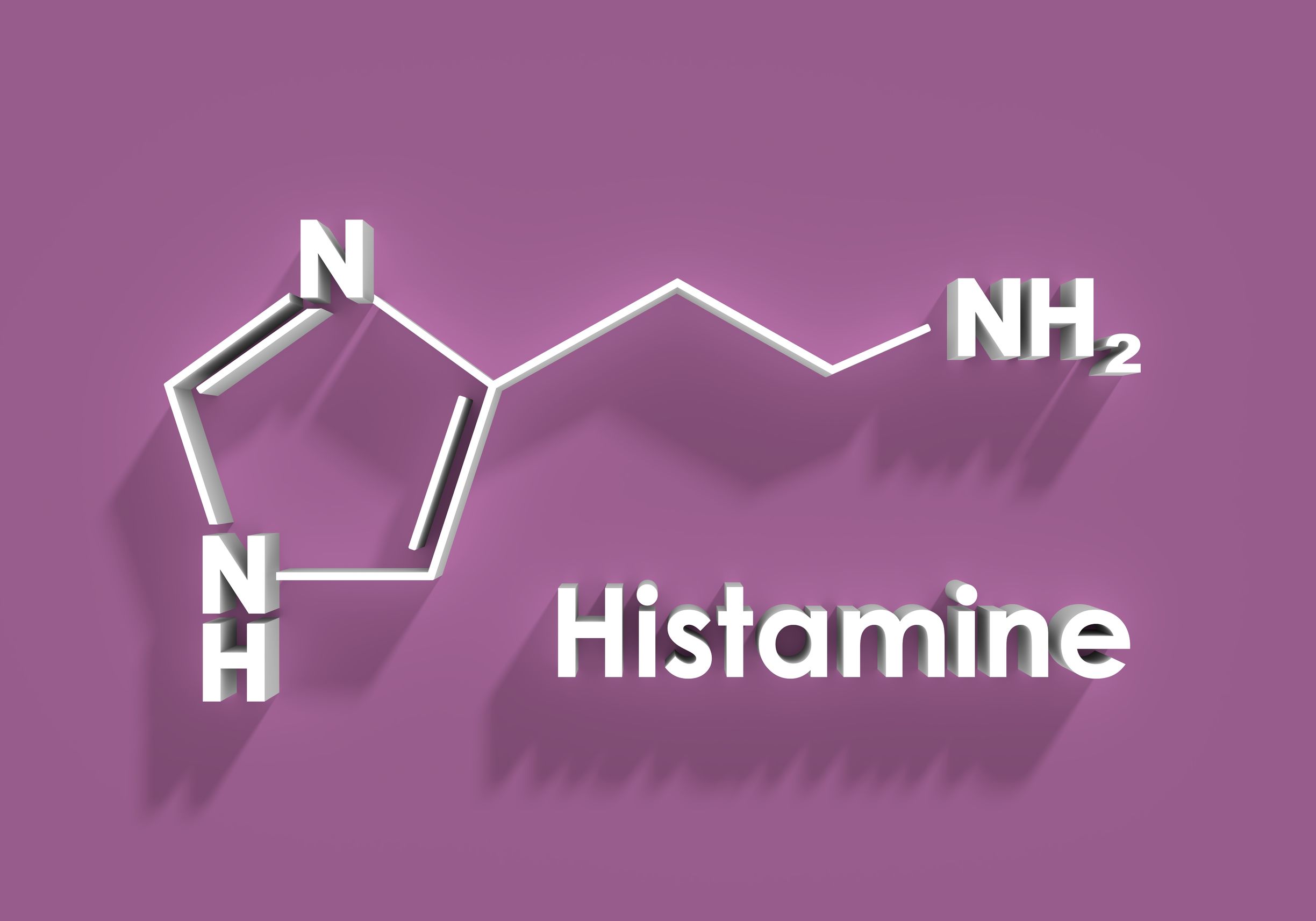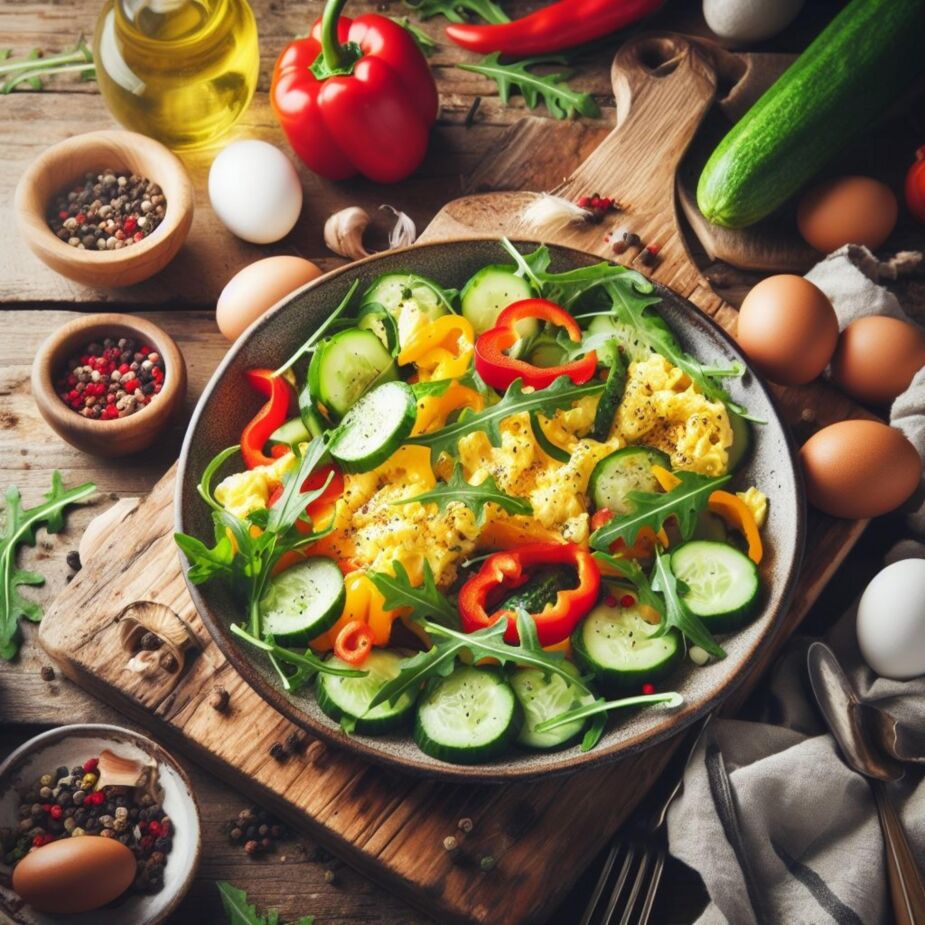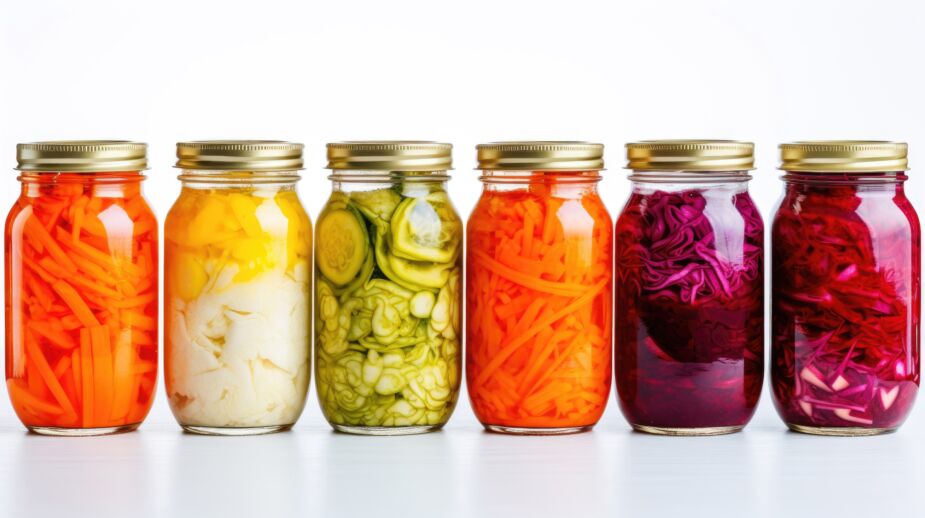What Is Histamine Intolerance?
Histamine intolerance (HIT) is thought to be related to a build-up of histamine.
Histamine intolerance is a condition in which the body has difficulty breaking down histamine, a natural compound made by the body’s immune system. Histamine plays a role in allergic reactions, inflammation, and regulating stomach acid, among other functions.
In someone with histamine intolerance, the enzyme responsible for breaking down histamine, called diamine oxidase (DAO), is either deficient or not functioning properly. As a result, excess histamine accumulates in the body, leading to a range of histamine intolerance symptoms ( see box below).
DAO is made in the intestines. If the intestines are not healthy, there may not be enough DAO to break down histamine normally. When build-up occurs, so do symptoms. This may explain why HIT symptoms are more common in persons with gastrointestinal disorders such as inflammatory bowel disease, IBS, celiac, and SIBO. Certain medications can also block DAO activity.
What Is Histamine?
Histamine is found naturally in the body.
Histamine is a chemical that is naturally found in the body. It is stored primarily in mast cells. It is also a natural component of many foods, a vital part of the immune and nervous systems, and plays an important role in inflammation.
Related Article-Click Here: The Low Histamine Diet: What Is It And Does It Work?
Histamine Intolerance Is Connected To Other Health Problems
Histamine intolerance is more common in people with underlying digestive issues.
Conditions such as inflammatory bowel disease, celiac disease, IBS, and SIBO increase the risk of histamine intolerance. There is minimal information on the actual incidence of HIT. Its correlation with other health issues is emerging.
It Is Not A Food Allergy
Certain foods can trigger histamine intolerance symptoms. But it is different than a food allergy.
Some histamine intolerance symptoms mimic an actual allergic reaction. But the body’s response at the cellular level is different, so skin testing and blood allergy tests will be negative.
HIT is thought to be due to a build-up of histamine. Because of this, the symptoms may not be immediate. Symptoms may be triggered any time your “threshold” is reached. Because of this, it may be difficult to pinpoint a particular culprit.
For example, you may have consumed high-histamine foods in the morning but low-histamine food in the afternoon. Even though the afternoon food was low in histamine, it put you over your tolerance level. So, symptoms occur in the afternoon. You might think your symptoms were due to the afternoon food, but the morning foods were more problematic in reality.
Related Article: Symptoms after COVID?
You May Have POTS
What To Do If You Think You Have Histamine Intolerance
Speak to your physician to evaluate other possible “look-alike” conditions.
Conditions such as true allergies, mast cell disorders, or underlying digestive disorders can look similar to histamine intolerance. If these possibilities have been evaluated and addressed, an elimination diet may be initiated to see if symptoms improve. A food diary is essential. Underlying issues must be corrected first for the best outcome. Because the diet is restrictive, please consult a professional to ensure proper nutritional intake.

Related Article: The Difference Between Histamine Intolerance and MCAS ( Mast Cell Activation)
Histamine Intolerance Test
A trial of a low histamine diet is used to determine the presence of histamine intolerance.
There are no tests that can definitely tell if someone has histamine intolerance. However, doctors can check the activity of DAO and measure histamine levels in the blood. Surprisingly, the results of these tests don’t always match up with the symptoms.
Regular allergy tests, blood, or skin testing won’t show if you have histamine intolerance. That’s because histamine intolerance is not caused by the same mechanism as typical allergies.
When thinking about histamine intolerance as a possible reason for feeling unwell, it’s important to also check for other related issues. These might include true allergies, mast cell disorders, inflammatory bowel disease, celiac disease, fructose malabsorption, small intestinal bacterial overgrowth, colitis, and more.
Once other related problems have been looked into, a low histamine diet may be tried. If your symptoms get better when you eat less histamine or cut it out of your diet completely, you might have histamine intolerance.

Treatment For Histamine Intolerance
Treat any underlying disorder first. This may improve histamine tolerance.
Start by focusing on underlying issues in combination with dietary changes. With histamine intolerance, it’s best to use a mix of approaches. This is because histamine intolerance often happens with other health problems that need attention, not just changes in what you eat.
It’s worth mentioning that histamine tolerance often gets better when you treat other health issues. For example, if you treat problems like IBS or SIBO, your symptoms may decrease. So, it’s crucial to treat the main health issue along with changing your diet.
Diet: The best dietary treatment is a low-histamine diet (see sample lists below). Some people also find benefit from intermittent fasting or a fasting-mimicking diet.
Following a low histamine diet can be hard if you’re already on a special diet like a gluten-free or low FODMAP diet. It’s important to work with a healthcare provider to make sure you get the right nutrients. Everyone’s tolerance to histamine is different, so you may need to try different types and amounts of foods to see what works for you.
After you finish the special diet, you’ll need to figure out which foods you can handle. Slowly add foods back to your diet to make sure you’re getting the best nutrition and lifestyle.
Sleep: 7-8 hours a night helps everything! Sleep can be disrupted with histamine intolerance. See which vitamin may help in my other article.
Support: Health issues and dietary restrictions are stressful and challenging. Seek help from family, community, faith organizations, online support groups, and local support groups. Avoid those who provide negative interactions. Negative interactions delay healing.
Exercise: Any exercise is helpful. Aim for 30-60 minutes daily. Don’t feel bad if you only fit in 15 – it still helps!
Relaxation: The benefits of relaxation techniques cannot be emphasized enough. Breathing exercises or progressive muscle relaxation are easy, portable, and free. Yoga and meditation are great as well. Relaxation for you may also be reading, enjoying time with friends, or playing music.
Medications: Antihistamines, topical steroids/creams, oral steroids, topical homeopathic or plant-based creams, and lotions for rashes.
Helpful Tools:
Books: Try a low histamine cookbook. It will make preparing meals easier, especially during the elimination phase.
Supplements: There is little to no data on these, but the following are sometimes used. Vit C, B6, Zn, Cu, Magnesium, Mangosteen, Quercetin, DAO promoters, DAO supplements, and topical creams. Please use any supplement under the guidance of a practitioner. Supplements can be helpful when used properly, but supplements can also have toxic side effects.
Related Article: Intermittent Fasting Or A Fasting Mimicking Diet May Help Histamine Intolerance

Foods On A Low Histamine Diet
See my article on the “Low Histamine Diet” for more information
Low histamine foods
- Eat fresh food as much as possible
- Fresh meat and fish (avoid canned meat and fish)
- Fresh fruit, except strawberry, citrus
- Fresh vegetables, except tomatoes, spinach, and cabbage
- Grains: rice, corn, millet, oats, sorghum
- Oils: Most cooking oils

Foods High In Histamine
High histamine foods
The list below contains commonly accepted high histamine foods/histamine liberators. This list is by no means exhaustive. Available lists vary and consistent data is hard to find on the histamine content of foods.
Fermented and aged foods are some of the biggest culprits.
• Alcohol: Champagne, red wine, beer, white wine,
• Fermented or smoked Meats/Fish: Sardine, mackerel, herring, tuna, salami
• Pickled or canned foods: Sauerkraut, pickles, relishes, soy sauce
• Fermented milk products: Yogurt, kefir, buttermilk
• Aged cheeses: Parmesan, Gouda, Swiss, cheddar.
• Fruit: Dried fruit, strawberries, citrus
• Vegetables: Tomatoes and tomato products, spinach
• Legumes: Chickpeas, soybeans, peanuts
• Other: Cinnamon, chocolate
• Grains: Wheat
• Histamine releasers: Citrus, papaya, pineapple, nuts, strawberries, egg white, additives
• DAO blockers: alcohol, black and green tea
- The histamine content of food varies depending on the duration of storage, ripeness or maturity, cooking, and processing.
- Certain foods may also not be high in histamine yet are high in compounds known as histamine liberators which can trigger similar symptoms.
Medications That Can Trigger Histamine Intolerance
These medications block the DAO enzyme:
• Acetylcysteine
• Aspirin
• Ambroxol
• Aminophylline
• Amiloride
• Amitryptiline
• Cefuroxime
• Cefotiam
• Cimetidine (Tagamet)
• Ciprofloxacin
• Cyclophosphamide
• Contrast Media
• Docein
• Diazepam (Valium)
• Haldol
• Metamizol
• Metoclopramide (Reglan)
• Naproxen (Aleve)
• Narcotics-Thiopental (IV med. for surgery)
• Noscapene
• Pancuronium
• Prilocaine
• Verapamil
Recent Research On Histamine Intolerance





